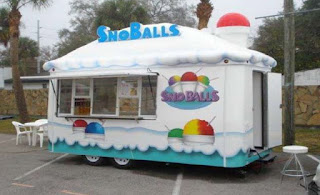Under a recently established USPTO pilot program "to explore procedures for expediting certain cancellation proceedings to further the goal of maintaining the accuracy and integrity of the U.S. Trademark Register," the Board initiated an "expedited cancellation" proceeding involving Jeffrey E. Martin's registration for the mark
MYST, in the stylized form shown below, for "entertainment services, namely live performances by a musical group." The Board dismissed the petition for cancellation because Petitioner TV Azteca failed to establish a prima facie case of abandonment based on its pleaded claim of nonuse during the three-year period immediately preceding the filing of the petition to cancel.
TV Azteca, S.A.B. de C.V. v. Jeffrey E. Martin, 128 USPQ2d 1786 (TTAB 2018) (Opinion by Judge Frances Wolfson) [precedential].
Procedure: This new expedited cancellation procedure is initiated by the Board. [It is not to be confused with the "streamlined" cancellation procedure that the Board has been considering. See comment below]. Under this program, the Board identifies cancellation cases that have not resulted in disposition by default and in which the only claims are abandonment or nonuse (or both). Cases with counterclaims are ineligible for the program. [What if the respondent wants to challenge petitioner's standing? What about affirmative defenses? -
ed.]. Once a case is identified as a candidate for the expedited cancellation program, the Board participates in the parties’ discovery conference to discuss voluntary stipulation to one or more of the Board's several Accelerated Case Resolution (ACR) options, including pretrial final disposition on the merits, or abbreviated trial on the merits.
See TBMP §§ 528.05(a)(2) and 702.04.
The Board participated in the parties' discovery conference and the parties agreed to litigate this case as an expedited cancellation proceeding. The parties agreed to exchange initial disclosures but dispense with formal discovery. Both parties filed testimony and documentary evidence together with their main briefs, and petitioner filed a rebuttal brief.
Abandonment: As the sole ground for cancellation, Petitioner TV Azteca alleged that Respondent Martin abandoned his MYST mark by discontinuing its use "for at least three years [March 2015 to March 2018] preceding the filing of this Petition to Cancel, with no intent to resume use."
Under Section 45 of the Trademark Act, 15 U.S.C. § 1127, a mark is deemed abandoned "When its use has been discontinued with intent not to resume such use. Intent not to resume may be inferred from circumstances. Nonuse for 3 consecutive years shall be prima facie evidence of abandonment."
“Because registrations are presumed valid under the law, the party seeking their cancellation bears the burden of proving a prima facie case of abandonment by a preponderance of the evidence.”Yazhong Investing, 126 USPQ2d at 1533; see also On-line Careline, 56 USPQ2d at 1476. If the petitioner presents a prima facie case of abandonment, the burden of production, i.e., of going forward, then shifts to the trademark holder to rebut the prima facie showing with evidence of either: (1) use of the mark during the statutory period; or (2) an intent to resume use. Rivard v. Linville, 133 F.3d 1446, 45 USPQ2d 1374, 1376 (Fed. Cir. 1998); Cerveceria Centroamericana S.A. v. Cerveceria India Inc., 892 F.2d 1021, 13 USPQ2d 1307, 1311 (Fed. Cir. 1989). The burden of persuasion, however, always remains with the petitioner.
Respondent Martin, appearing
pro se, submitted several documents bearing the word MYST, but many were undated and none were dated during the March 2015 to March 2018 time period at issue. He also submitted an unsworn and therefore nonprobative statement regarding those documents. Thus Martin did not establish use of the mark MYST during the relevant period - but TV Azteca had the initial burden to show that Martin
did not use his mark during that period.
In short, TV Azteca faced the unenviable task of trying to prove a negative. It focused on one particular document that had a partial date, namely, a flyer promoting a "MYST" concert on "March 25th" [no year specified] at the Pennant East in Bellmawr, New Jersey, and attempted to prove that the Pennant East had closed in 2011. Petitioner relied on several newspaper articles reporting the closing and on local certain records indicating that Pennant East had lost its liquor license, and thus any performance by Martin could not have occurred during the relevant three-year time period.
TV Azteca submitted six newspaper articles and a blog post discussing the closing of Pennant East, but Martin objected to these items as inadmissible hearsay. TV Azteca pointed to the "residual hearsay" exception of Fed. R. Evid. 807(a) for statements that have "equivalent circumstantial guarantees of trustworthiness" analogous to those of a public record and are "more probative on the point for which it is offered than any other evidence that the proponent can obtain through reasonable efforts" The Board noted that the residual hearsay exception is intended to "be used only rarely, in truly exceptional cases."
Pozen Inc. v. Par Pharm. Inc., 696 F.3d 1151, 104 USPQ2d 1969, 1976 n.6 (Fed. Cir. 2012) (applying Fifth Circuit law and citing
United States v. Walker, 410 F.3d 754, 757 (5th Cir. 2005)). The Board was unmoved: "Even assuming no reasonable effort could have discovered more probative evidence, the articles and blog post do not possess 'circumstantial guarantees of trustworthiness' equivalent to official records or witness testimony. We therefore sustain Respondent’s objection to the news and blog articles."
TV Azteca also pointed to certain official records in an attempt to show that Pennant East closed its doors in 2011. Again, the Board was unimpressed:
These records do not support Petitioner’s contention that Pennant East closed. Even if Pennant East twice lost its liquor license, that alone does not establish that the premises were shuttered, did not move elsewhere, or did not continue operating as an alcohol-free establishment or in violation of the licensing laws. Furthermore, even if the evidence could suggest that Pennant East closed in 2011, it is at best inconclusive as to whether Respondent discontinued use of his mark from March 2015 to March 2018.
The Board ruled that TV Azteca had failed to establish a prima facie case of nonuse.
We recognize that in attempting to prove a negative, as in proving abandonment through nonuse, “without resort to proper inferences the burdened party could be faced with an insurmountable task.” Cerveceria Centroamericana, 13 USPQ2d at 1310. But even in expedited proceedings, inferences must be based on proven foundational facts. Here, drawing all reasonable inferences available based on the evidence presented by Petitioner or contained in Respondent’s initial disclosures, we find that Petitioner has failed to establish a prima facie case of Respondent’s nonuse.
And so the Board dismissed the petition for cancellation.
Read comments and post your comment here.
TTABlog comment: After this decision, why would a petitioner ever agree to a streamlined or expedited procedure (unless petitioner had a smoking gun)? Seems to me a petitioner needs to take discovery to prove its case, or else it will face the same nearly insurmountable task faced by TV Azteca: proving a negative.
The Board noted that it recently explored the possibility of establishing a "streamlined cancellation proceeding,” that would be initiated by a potential petitioner when it filed its petition to cancel. Under that plan, the petition would be limited to the grounds of nonuse or abandonment (or both), and the petition would be accompanied by any evidence or testimony in support of the claim(s). Counterclaims would not be permitted, very limited discovery would be allowed only when granted by the TTAB for good cause shown, proceedings would be conducted on an abbreviated schedule, there would be no oral hearing, and the TTAB would issue a decision within an expedited timeframe. The USPTO published a Request for Comments on streamlined proceedings in the Federal Register, 82 Fed. Reg. 22517 (May 16, 2017). However, consideration of the streamlined procedure is presently on hold while the Board explores the efficacy of the current pilot program, called the “expedited cancellation proceeding.” Unlike the streamlined model, the stipulations into which parties may enter in an expedited cancellation proceeding include all options available under the Board’s general ACR procedures.
Text Copyright John L. Welch 2018.








































